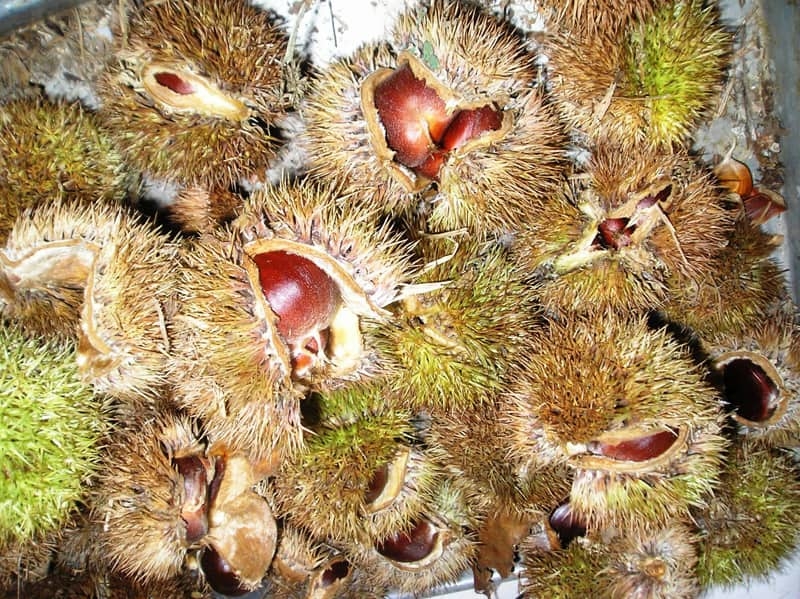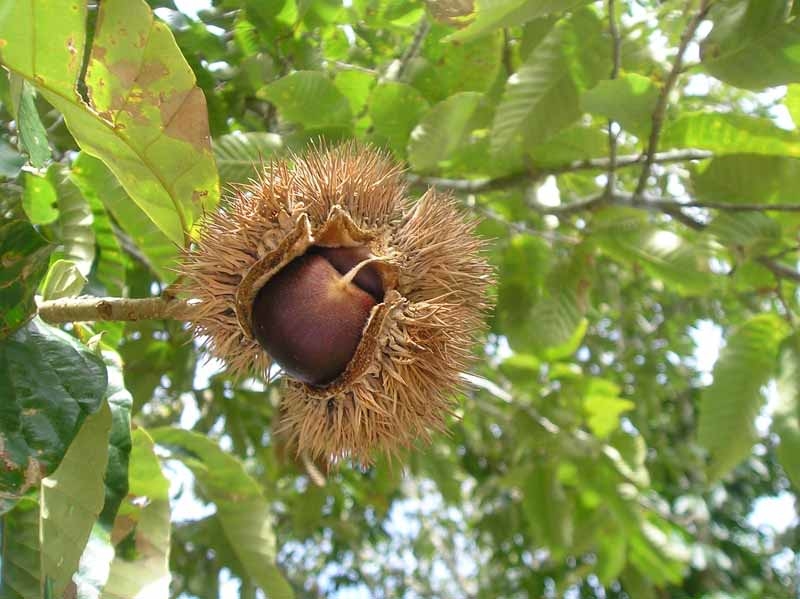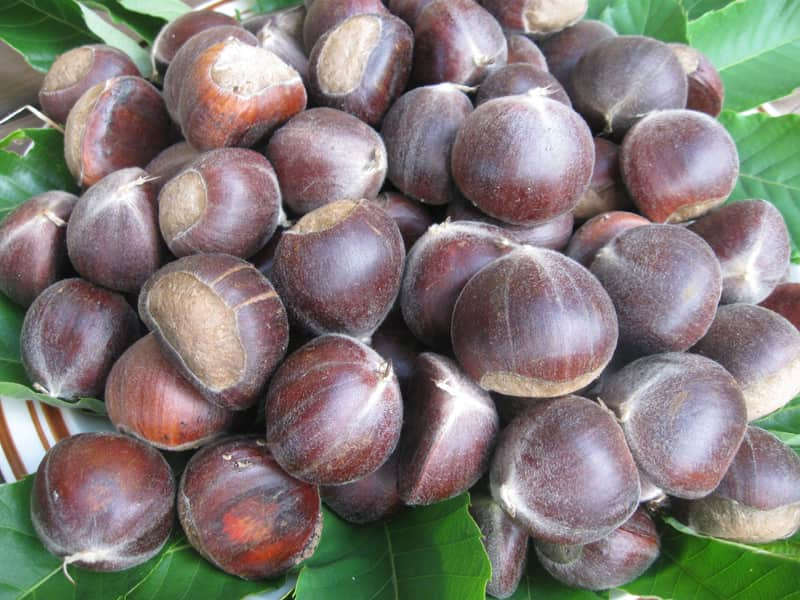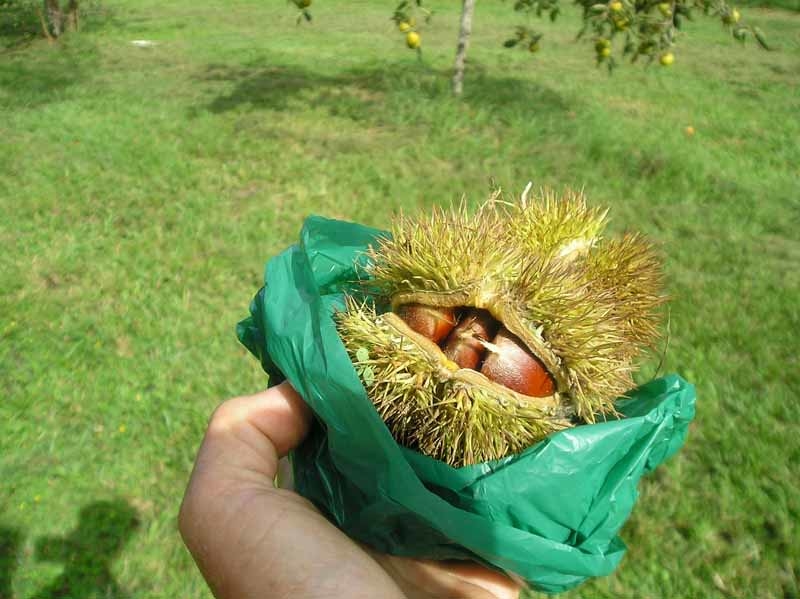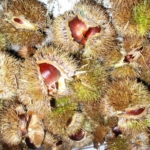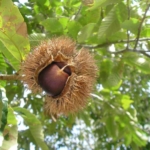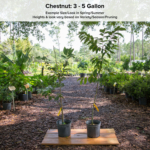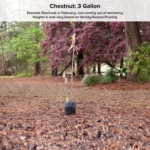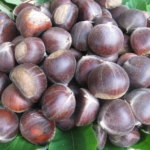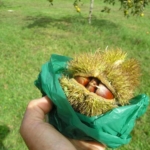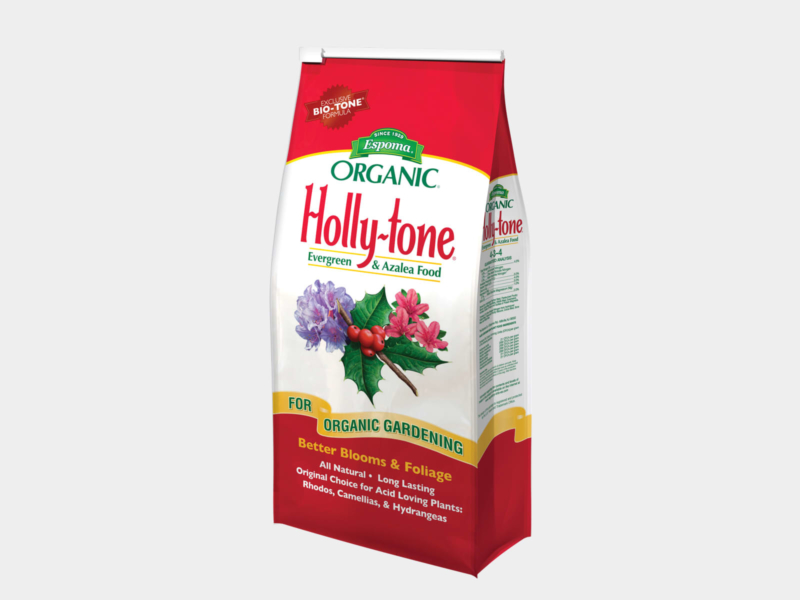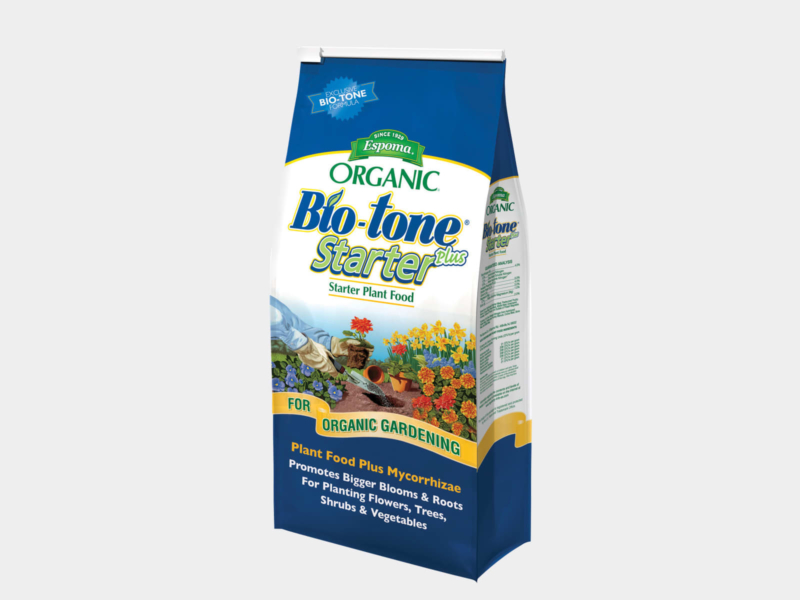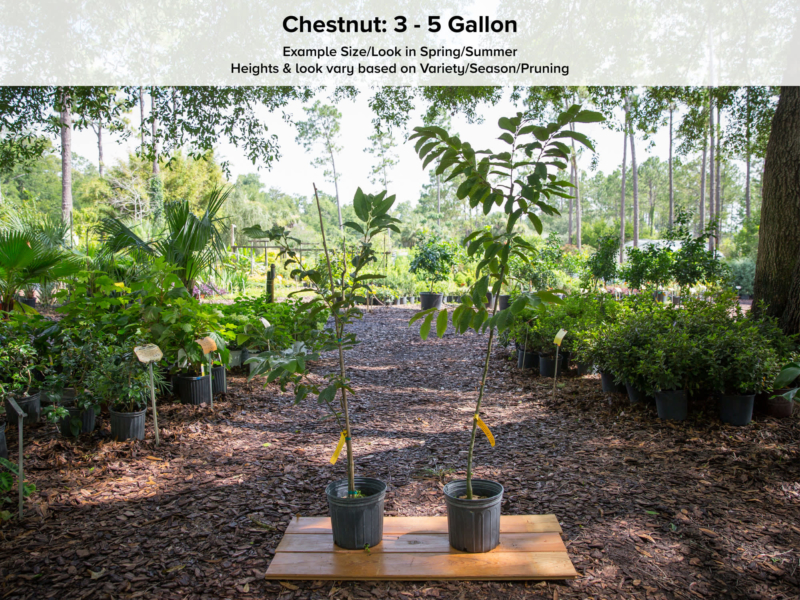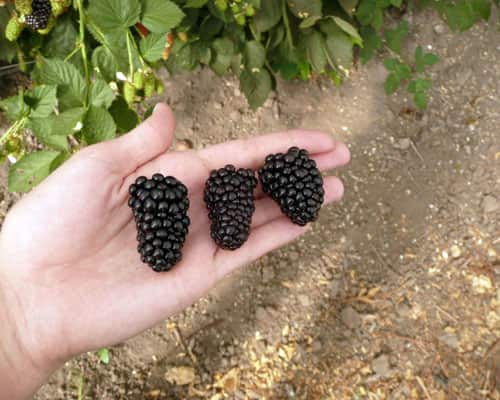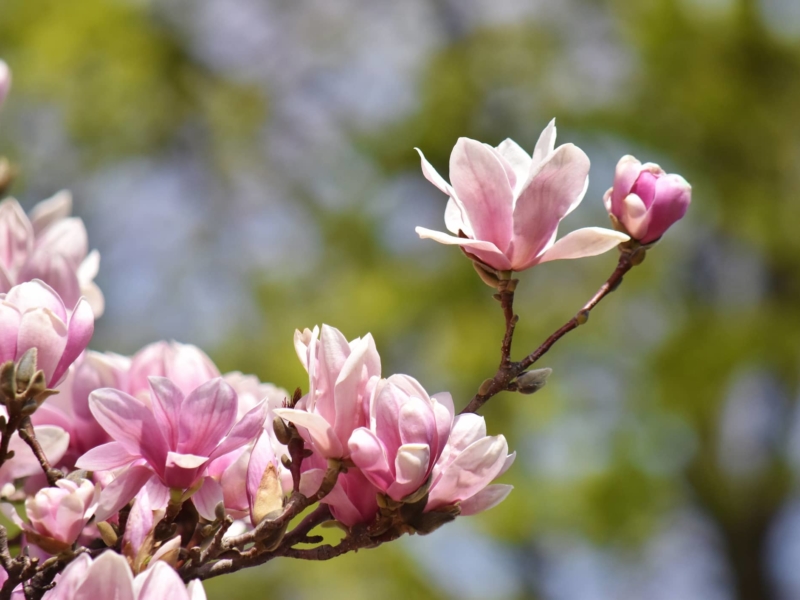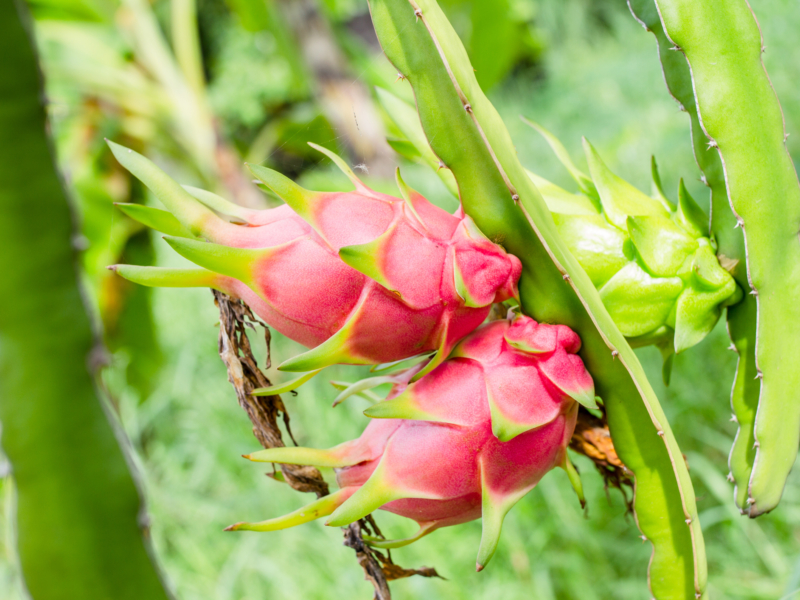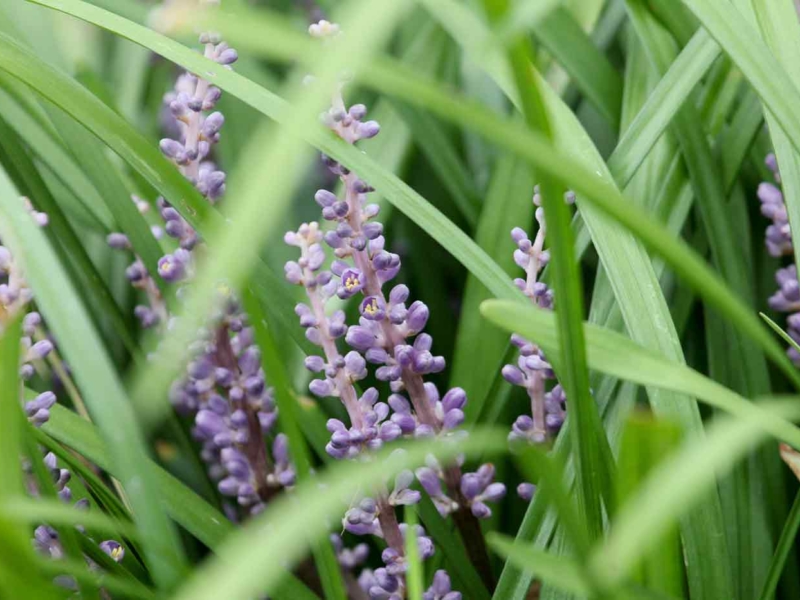Recommended with Dunstan Hybrid Chestnut Tree
- Product Description
- Planting & Care
- Shipping Info
Dunstan Hybrid Chestnut: Nature’s Heirloom Treasure
About the Fruit
The Dunstan Hybrid Chestnut is a majestic offering from Mother Nature, a bountiful producer of large, sweet-tasting nuts. These chestnuts are a culinary delight, ready to be roasted for a festive treat or used in sumptuous recipes. Their rich, nutty flavor is a testament to the careful crossbreeding of American and Chinese chestnut species, designed to bring the best characteristics of each to your table.
What to Know About the Tree
Behold the Dunstan Hybrid Chestnut Tree – a robust grower with a magnificent stature. This deciduous tree is a living legacy, displaying lush foliage that turns a golden hue in the fall. Reaching heights of 40-60 feet, it’s a stately presence in any landscape. Not only does it offer a generous canopy, but it’s also blight-resistant, ensuring longevity and ease of care for the avid gardener.
Harvest Season
When autumn arrives, the Dunstan Hybrid Chestnut Tree celebrates the season with a bountiful harvest. These chestnuts mature in September and October, just in time to be gathered and savored during the cool, crisp months. The harvest is not only a practical yield but also a picturesque scene as the spiny burrs open to reveal the shiny, mahogany-hued chestnuts within.
Enhancing Your Fruitscape™
Imagine a fruitscape™ graced by the grandeur of the Dunstan Hybrid Chestnut Tree. Its impressive form and seasonal color transitions add stately elegance to any garden. Perfect as a focal point or integrated into a diverse orchard, this tree contributes shade, beauty, and a harvest that bridges the gap between ornamental and functional. It’s an investment in your fruitscape™ that will enchant for generations to come.
At Just Fruits and Exotics, your Dunstan Hybrid Chestnut Tree arrives 100% shipped in pot, complete with our superior packaging for safe and easy shipping. We’re a nationally renowned, family-owned and operated nursery, committed to providing you with the utmost quality and service. Trust us as your go-to online plant nursery to add a touch of the extraordinary to your home garden. Select your Dunstan Hybrid Chestnut Tree today, and take the first step towards a lush, fruitful paradise.
| Cold Hardy | (20°)-(15°) |
|---|---|
| Container Plant | No |
| Grafted | No, on its own root system |
| Growing Zone | 5A, 5B, 6A, 6B, 7A, 7B, 8A, 8B, 9A, 9B |
| Mature Height | 35 FT |
| Mature Width | 20-25 FT |
| Pollinator | Needs Another Chestnut Tree for Cross-Pollination |
| Spacing | 20-25 FT |
| Sunlight | Part to Full |
Recommended Fertilizers
Starter Fertilizer: Kickstart with Espoma Organic Bio-tone® Starter Plus. This potent blend boosts root mass and aids in mitigating transplant shock, ensuring your plants thrive in their new home.
Maintenance Fertilizer: For continued growth and fruit production, we recommend Espoma Organic Holly-Tone Fertilizer, designed specifically for acidic loving plants. This balanced formula nourishes your plants, promoting vibrant growth and bountiful harvests.
Fruitscape™ with Chestnut Trees
Indulge in the beauty of Fruitscape™ with our majestic Chestnut Trees. These towering trees not only offer a striking presence in your landscape but also provide a bountiful harvest of delicious, nutritious nuts.
Chestnut Trees are renowned for their ornamental value, boasting a broad canopy of glossy green leaves that provide shade and create a serene atmosphere in your garden. As the seasons change, the leaves transform into a warm, golden hue, creating a captivating fall display.
Beyond their aesthetic appeal, Chestnut Trees offer a delectable reward. The tree produces an abundance of chestnuts encased in spiky burrs, ready to be harvested and enjoyed. Roasted, boiled, or used in various culinary creations, the sweet and nutty flavor of chestnuts adds depth and richness to your favorite dishes.
Thriving in full sun to partial shade, Chestnut Trees prefer well-drained soil with a slightly acidic to neutral pH level (pH 4.5-6.5). This pH range provides optimal conditions for their growth and nutrient uptake. They are hardy trees that can withstand various weather conditions and are relatively low-maintenance, making them an excellent choice for both experienced and novice gardeners.
Chestnut Trees are not only a source of edible nuts but also provide valuable timber and wildlife habitat. Their presence attracts a variety of birds and other wildlife, enriching your garden ecosystem.
Embark on a Fruitscape™ adventure with Chestnut Trees, and enjoy the beauty, shade, and delicious harvest they offer. With their timeless appeal and rewarding nature, Chestnut Trees are sure to become a cherished addition to your landscape and a source of culinary delight.
Growing Guides
You can find many planting & care guides on our growing guides page.
Shipping Restrictions
Unfortunately, We Cannot Process Orders to California, Hawaii, Alaska, or Internationally: Please note that due to specific agricultural regulations, we’re unable to ship any plants to the states of California, Hawaii, and Alaska, or outside the United States. Additionally, citrus trees can only be shipped within the state of Florida.
Shipping Information
Before Your Plants Arrive: You can find many guides on unpacking, planting, & care, on our growing guides page.
The Journey From Our Nursery to Your Door: We NEVER ship our plants bare root. Your plant will travel in the very container in which it was nurtured. We thoroughly prune and water them before packing, and make sure they’re well wrapped to retain moisture during transit. It’s as though you’ve personally collected them from our nursery!
Choose Your Ship Date: We understand you’ll want to be available when your plant arrives. Our checkout process features a handy calendar that allows you to choose the Monday on which you want your plant to ship. Depending on your location, you’ll likely receive your plant by Wednesday, Thursday, or Friday of that week. Once shipped, UPS will generate a tracking number and send it to the email you provided. You can then follow your plant’s journey and ensure someone is available to unpack it on arrival day.
Click Here To View Our Shipping Page For More Information & Packing/Unpacking Plants Videos
Growing Calendar
- Planting
- Pruning
- Harvest

